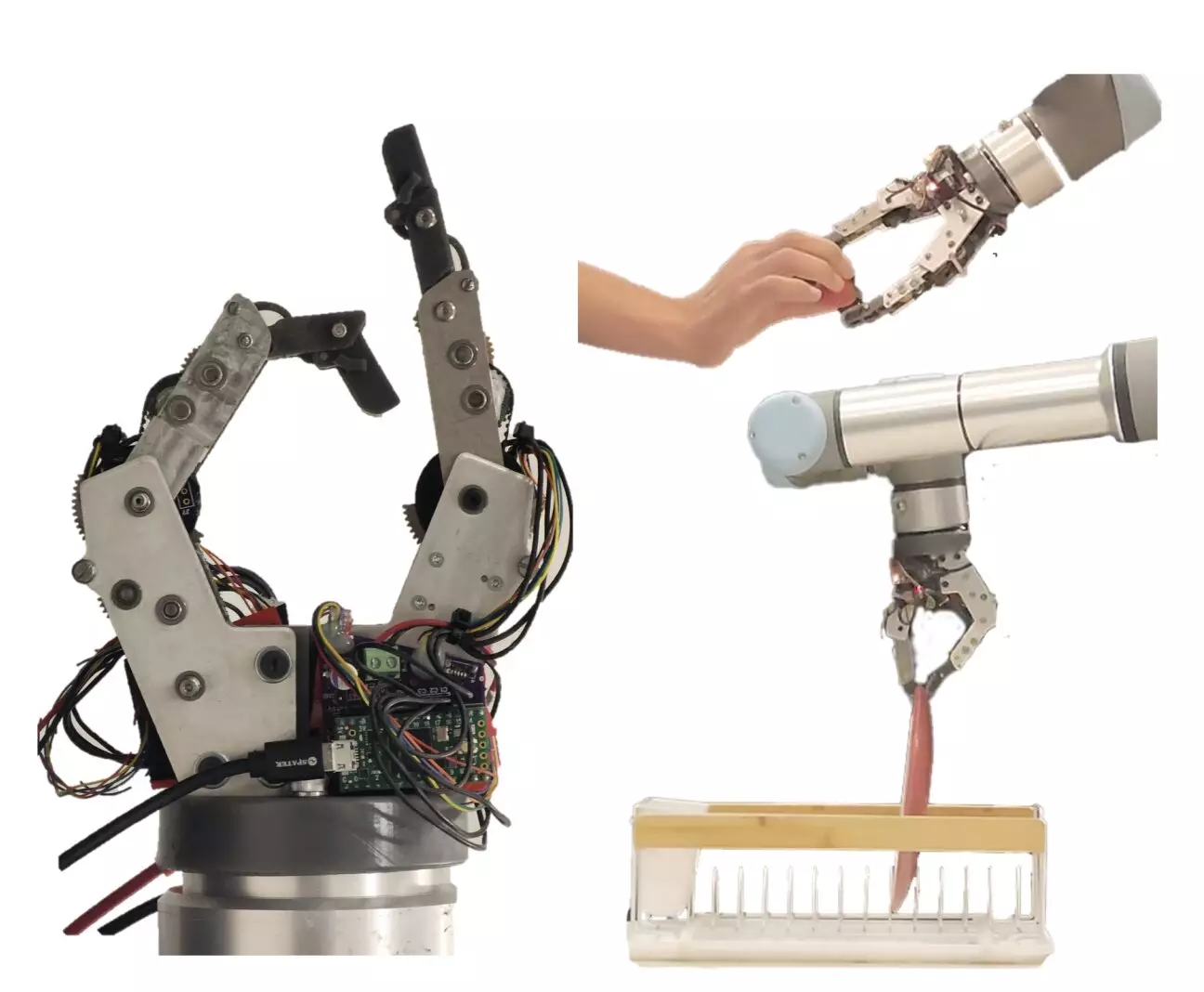Robots are becoming more ingrained in our daily lives, making it essential for them to be capable of effectively manipulating various objects. The development of cost-effective robotic grippers is crucial in enabling robots to perform dexterous object manipulation tasks. Recently, researchers at the Improbable AI Lab and Massachusetts Institute of Technology (MIT) unveiled a new two-finger robotic gripper that aims to revolutionize everyday manipulation tasks.
The innovative robotic gripper designed by the researchers features two human-like fingers that can bend and tightly grasp objects, mimicking the capabilities of human hands. The main goal of these fingers is to handle simple daily tasks, such as picking up objects and placing them in specific locations. The design is focused on compactness while achieving optimal performance, making the gripper versatile and efficient.
Initially, the researchers developed a gripper with only 2 degrees of freedom (DoF) using two robotic fingers. While this limited the complexity of manipulation tasks the gripper could perform, the team plans to explore designs with additional fingers in the future. By adding more DoF, they aim to enhance the gripper’s capabilities without compromising its size and functionality. This evolution could lead to the creation of grippers with three or even four fingers, bringing them closer to human hand dexterity.
To assess the functionality of their two-finger gripper, the researchers conducted a series of real-world experiments. These experiments measured the gripper’s speed, compliance, and force when handling objects during basic pick-and-place tasks. The results of the tests were promising, as the gripper successfully completed all tasks, including placing dishes in a rack, handling delicate objects like strawberries, and picking up thin items such as paper. Although these tasks may seem basic, they are fundamental activities that robots must perform in household settings.
The successful performance of the two-finger gripper in real-world tests indicates its potential for enhancing the development of basic household robots. As the researchers continue to refine the gripper’s design and explore its capabilities across a wider range of daily tasks, the possibilities for integrating robotic technology into our daily lives are endless. By leveraging advanced actuators and enhancing the gripper’s dexterity, future iterations could unlock new opportunities for robots to assist humans in various settings.
The development of innovative robotic grippers like the two-finger design showcased by the Improbable AI Lab and MIT researchers signifies a major breakthrough in object manipulation technology. By striving to replicate human hand functionalities in robots, the potential for enhancing daily task automation and assistance is within reach. As the field of robotics continues to evolve, the future of robotic grippers looks promising in reshaping how robots interact with and support humans in everyday environments.


Leave a Reply